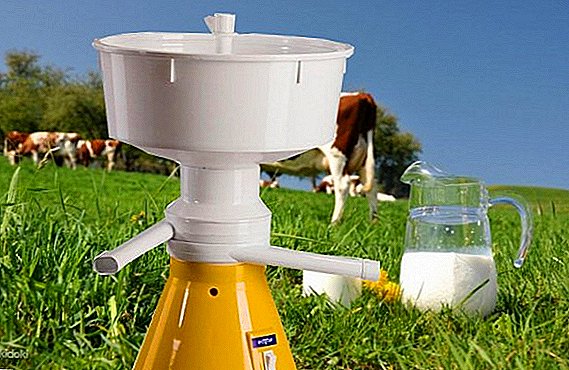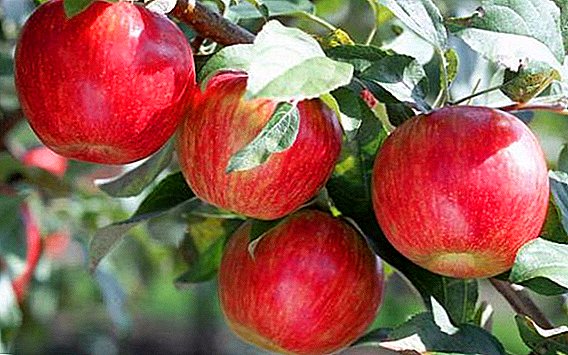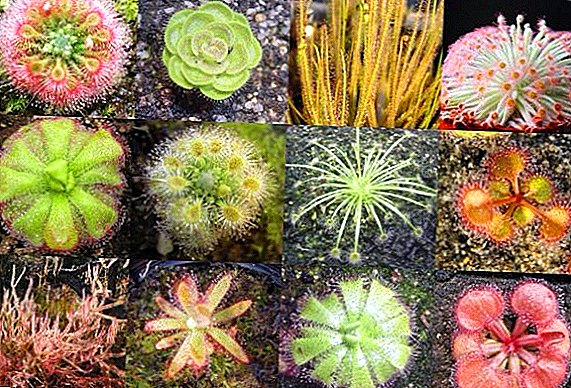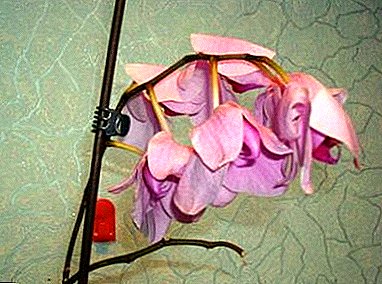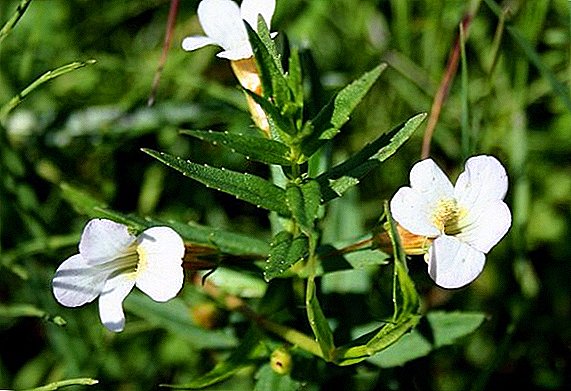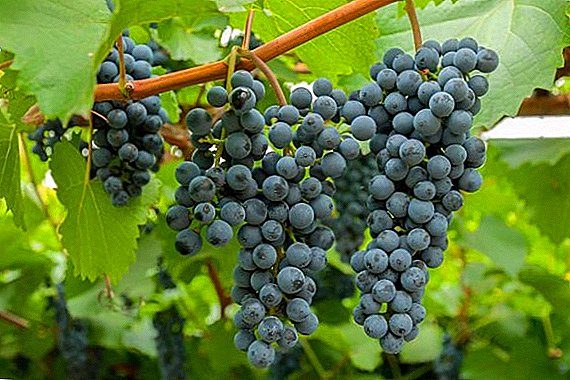 Among the existing diversity of exotic plants that look spectacular in any room, tsikas is far from the last place. This gorgeous palm tree brings to our everyday life a bit of coolness of the tropics and the warmth of the sunny dunes. They are loved by travelers, romantics, dreamers and incorrigible optimists. On the care of sago room palm at home, as well as the problems that growers often face when growing plants, then we will talk.
Among the existing diversity of exotic plants that look spectacular in any room, tsikas is far from the last place. This gorgeous palm tree brings to our everyday life a bit of coolness of the tropics and the warmth of the sunny dunes. They are loved by travelers, romantics, dreamers and incorrigible optimists. On the care of sago room palm at home, as well as the problems that growers often face when growing plants, then we will talk.
Requirements and necessary conditions
In the natural environment of the Pacific tropics, these majestic members of the sago palm trees are prone to slow development. During the year they can grow up to three sheets and grow a little. And in room conditions, the height and number of feathery stems practically does not change.
With proper care and a properly selected location, the flower will annually please the owners with a new leaf, gradually increasing the lush bright green fan. Let's try to understand all the intricacies of this capricious exotus.
Did you know? Botanists consider cicasas the most ancient plants. Their remains were discovered by archaeologists in the layers of the crust of the Mesozoic era. And in those days, these palm trees grew on all continents.
Lighting
Sago room palm prefers well-lit warm areas, so you need to find the brightest places in the house for it. It is desirable that the light warms the leaves for 8-10 hours a day.
In summer, the pot with the plant can be transferred to the sunny balcony or loggia, and in winter it needs additional lighting.
If it does not provide the necessary illumination, the foliage will stretch greatly and lose its uniform pinnacle, which will undoubtedly affect decorativeness. Moreover, in the shadow of the cicasas stop growing.
But do not overdo it with ultraviolet. Direct sun rays, as a rule, leave behind severe burns on delicate sheet plates. To prevent this from happening, place a flower in the southeast or southwest side of the house, where there is a lot of ambient light.
Exotic plants such as pandanus, alokaziya, Forster and Belmore hovey, Strelitzia will perfectly decorate your home.
And in order to evenly develop the crown of your palm, periodically turn the pot. 
The soil
Cycadite will be grateful for the acidic fertile substrate and good drainage. These are the main requirements of the plant to the physico-chemical characteristics of the soil.
Important! Many novice growers, tempted by the luxurious crown of cicas in the window, buy small seedlings of the flower at random. And experts advise to carefully examine the stem, foliage and plant buds. They should be clean and smooth, without any damage. After all, even the smallest abrasions and scratches can lead to the death of a flower.
For this variety of palm trees experienced flower growers are advised to use light soil mixed with river sand and top peat. The classic variant for cicasum consists of equal portions of raw peat, humus, hardwood and river sand (perlite can be added as an alternative).  In addition, the ground should be drained throughout the volume. It will be wrong to simply fill the pot with a small layer of expanded clay when planting - it must be evenly distributed over the entire planting container.
In addition, the ground should be drained throughout the volume. It will be wrong to simply fill the pot with a small layer of expanded clay when planting - it must be evenly distributed over the entire planting container.
Such a structure will allow excess moisture to drain into the pan, just make sure that there is a hole in the pot. If you do not have time to mess with the preparation of soil mixture, you can use the purchased soil for palm trees.
Temperature
Palma tsikas, when they take care of themselves at home during the summer period, develop comfortably in warmth, and in winter, when a period of calm comes, she needs cold. The optimum temperature regime is in the hot season within + 20-23 ° С, and in winter + 14-15 ° С.
It is important that the plant does not fall under drafts and cold air currents.
Did you know? Today, the palm tree is a symbol of a tropical paradise holiday, and earlier it was a sign of celebration and celebration. The ancient Romans had a tradition to reward champions of gladiator fights and victorious warriors with palm branches, which meant victory and honor.

Humidity
Lighting and humidity of the air - the main criteria that determine the state of the flower. But many inexperienced growers, having acquired cicasas, do not know what to do when the leaves turn yellow.
We will discuss this in more detail below, and now we will focus on one of the factors that affect the coloring and decorativeness of the palm tree.
This species loves moderate dampness. Therefore, experts on hot sunny days are advised to moisten the foliage every evening. Some rub a large leaf plate with a sponge dipped in water.
In winter, this is not necessary. But if the pot is placed near the heater, then do not be lazy at least once a week to sprinkle it with water.
Proper care
Many people like Zikas, but having heard of his demands, beginners stop their ardor, because they do not know how to care for a flower in an apartment setting. Experts say the need for elemental irrigation, fertilizer, foliage hygiene and transplanting.
Did you know? The main food of the inhabitants of New Guinea and the Moluccas is the sago, which is mined from the core of the cyclotis.

Watering
There are always plenty of moisture and heat on the native tropical coasts of cicasas. But despite its origin, capricious exotus can withstand a short drought and does not tolerate excess water at all.
Abuse of these qualities of the cycad is not at all worth it, otherwise it will wither. Professionals in horticultural affairs are advised to water the plant when an earthen ball in a pot is half dry.
Please note that the moisturizing process is different from the classic watering. First you need to pour a large amount of defended non-cold water under the root to soak the substrate.
Then, when excess liquid is drained into the pan, repeat the procedure, this time in order to fuel the entire root system. The rest of the water from the stand under the pot must be drained, because fungal spores and mold can start in them, which will inevitably lead to the death of palm trees. 
Fertilizer
If you do not know the preferences of this plant, it is easy to destroy illiterate feedings. To fertilizers tsikas extremely demanding.
Important! The amount of fertilizer needed for a flower directly depends on its lighting, because it is light that affects the absorption of nutrients. If the pot is located in a place where the sun rarely looks in and there is no illumination, you need to make a quarter of the norm. If the flower is in the penumbra, the dosage should be halved. And only those individuals who bathe in the sun all day can cook a full portion.
In order not to harm the plant, it is important to remember the main rules:
- Feeding should be done once a month, starting from the period when the tsikas will come out of hibernation (from spring to autumn).
- Palma reacts poorly to complex mineral fertilizers.
- For the pot recommended exclusively organic without magnesium and potassium salts.
- Ideal for horse bones are horse manure and mullein solutions.
- When feeding, be sure to consider the ability of the plant to absorb the introduced substances. And remember that in this case it is better to underfill than pour.

Pruning and care of leaves
Growing a sago palm tree does not provide for permanent duty with scissors in hand to remove all the excess or to form a crown. In this case, it will be necessary to periodically cut off the lost attractiveness and slack leaves.
They are easy to see in an atypical shape and color, and dying specimens often drop down, lying in a horizontal plane.
Did you know? Palm leaves are distinguished by their strength. Even today, many Pacific Island natives make hats, clothing, and even roofs and furniture for tree houses from fresh raw materials.
Transfer
When growing cicas at home, only young specimens need transplantation, which the former planting capacity has become cramped. Experts advise to carry out this procedure every three years.
But if the palm tree began to intensively increase biomass and threw out new leaves, you need to wait. Wait until the foliage is stronger, because the season of transplants lasts from spring to autumn.
Remember that cycads are always better developed in slightly cramped vessels. Therefore, do not rush to transplant them. This is done only with the apparent discomfort of the flower. The new tank should be deep and 2-3 cm wider in diameter than the palm trunk. Accordingly, the ideal proportions of the pot are approximately as follows: with a diameter of 15 cm - a depth of 30-35 cm.
Before starting a wet earthen clod with cicasum, remove a third of the foliage on it. Always start this process from the bottom, removing old branches. Act very carefully and protect the root system of the exotic from any damage.
Carefully disinfect all inventory and utensils, otherwise the plant may become infected with putrid infections.
Breeding
At home, reproduction of cicasus is possible only in a vegetative way. It is carried out when scions emerge from the mother bush. With disinfected and pointed knife, children are cut off.
Then they cut the place of the cut and the obtained planting material "Fundazole" (to destroy pathogens and fungi), "Kornevin" (to stimulate development).
A new sprout is planted in wet river sand, and better perlite, and maintains a moisture level favorable for the appearance of roots. It must be kept in a semi-shadowed place at a temperature of about 30 ° C.  Be prepared: the roots can appear only after six months. Therefore, immediately be patient and do not rush to draw conclusions about the failed reproduction.
Be prepared: the roots can appear only after six months. Therefore, immediately be patient and do not rush to draw conclusions about the failed reproduction.
On an adult palm tree, the place where the process was taken from, must be covered with wood ash or crushed coal.
To get a tsikas from seeds at home is almost impossible. But if you like to experiment, have patience and time, then you can take a chance. True, the main nuance of this method is the difficulty to get palm seeds, because domesticated palm trees bloom extremely rarely.
Wait until the seedlings give the first leaf, and transplant the palm trees in separate pots. Then the soil mixture that we mentioned above is suitable for them.
Did you know? In hot days, palm trees stop growing and rest, and at night they catch up with everything that is lost.

Possible problems
Successful cultivation of this variety of palm trees requires not only patience, but also certain knowledge and skills. Unfortunately, in the reviews about the culture, flower growers are increasingly discussing all sorts of problems that arise during home cultivation of a flowerpot.
In some cases, their cause is the inexperience of the owners, in others - a violation of the rules of care and disregard for the demands of the cyclotron. Consider the most common questions and answers to them.
Rotting of the lower part of the trunk and roots
The problem is expressed by softening the lower part of the trunk. Dirty-brown spots are clearly visible on it. When digging, black or dark brown areas on the roots are noticeable.
Such a flower can be saved by cleaning from all affected areas, their disinfection and transplanting into a new container. At the same time, when you get the affected plant from the old pot, completely shake the ground from the roots, carefully inspect them and cut everything that has died off to the living.
Then treat the affected area with fungicidal agents ("Fundazol", "Maxim", "Home", "Scor"). Then cover this place with garden pitch, paraffin or wax. Soak healthy roots with "Kornevin" or "Emistim", "Heteroauxin".
It is better to transfer such specimens to full recovery to perlite. This can take from 3 to 6 months or more. If the flower began to give new root processes, the rot ceased. Otherwise, repeated cleaning and disinfection may be necessary. 
Important! Experts believe that the reasons for the rotting of the root system and the stems of palm plants are excess moisture. At the time of illness, all moisturizing procedures must be stopped and care must be taken to keep the flower in a sunny, well-ventilated place..
Rotting top of the trunk
If you notice a darkened soft top of the palm trunk, it means that the disease completely destroyed the base of the pot. In such cases, the infection affects the foliage - it becomes brown, falls to the floor.
In most cases, the sinus can not regenerate dead tissue and dies. But do not rush to throw it away.
To begin, remove all softened affected areas, capturing a few centimeters of live fibers. Spread the roots and trunk generously with any fungicide, then cut the surviving cicas base tissues into plates and place them on raw agroperlite. Chances are high that young shoots will appear.
Light spots on the leaves
In such cases, you need to revise the frequency and composition of flower dressings, and also pay attention to the conditions of its maintenance. Perhaps he lacks light or cold. The reason may lie in the elemental lack of nitrogen. 
Did you know? On the shores of the Gulf of Guinea amazing palm trees grow, in the nuts of which there is juice, which, when thickened, resembles butter in taste, color and consistency.
Yellow leaf tips
This defect is most often observed when the plant lacks moisture. Eliminate the problem is quite real, adjusting watering and the level of moisture in the room. As a rule, a problem occurs during the hot period or when the flower is near the battery.
Dry leaves and yellow leaves
This pattern is often observed when the plant does not receive the required nutrients. Then the old leaf plates give up their resources to form new shoots and die.
But the reason may be hiding in an overdose of fertilizing. If such a “sinner” was noticed behind you, do not wait for the problem to be solved by itself, but immediately rinse the soil. And better transplant a palm tree.
Also review all the nuances of flower care and the ratio of existing conditions with the necessary requirements of cicas. 
New leaves are shorter than old ones
This problem is quite expected when conditions of detention were drastically changed for the worse. For example, you moved the pot from the sunny side to the shade. Palma did not have time to adapt, this process coincided with the build-up of a new escape, and as a result you got a very unattractive picture.
Important! Zicas is a poisonous plant for humans and animals. When ingested, neurotoxins contained in all parts of the plant provoke poisoning with subsequent complications and death.
The reasons may also be exhausted land in a pot, lack of food or its excess. In any case, the need to adjust the care and conditions created for the plant.
New leaves do not grow
Every year cycad must produce 1-2 leaves. In their absence, you should pay attention to the temperature regime, which contains a pot, its lighting, the frequency of watering and fertilizing. And also inspect the trunk for trunk rot.  Now all the secrets of this beautiful, but, alas, naughty flower are revealed to you. Learning what to do when the leaves turn yellow and fall on the cicasus during care at home, the base is rotting, there are no new shoots, do not be afraid to start it.
Now all the secrets of this beautiful, but, alas, naughty flower are revealed to you. Learning what to do when the leaves turn yellow and fall on the cicasus during care at home, the base is rotting, there are no new shoots, do not be afraid to start it.
If you follow all the above recommendations, be calm - the sago palm will not disappoint you, but on the contrary, from year to year will increase its emerald crown for decades.


